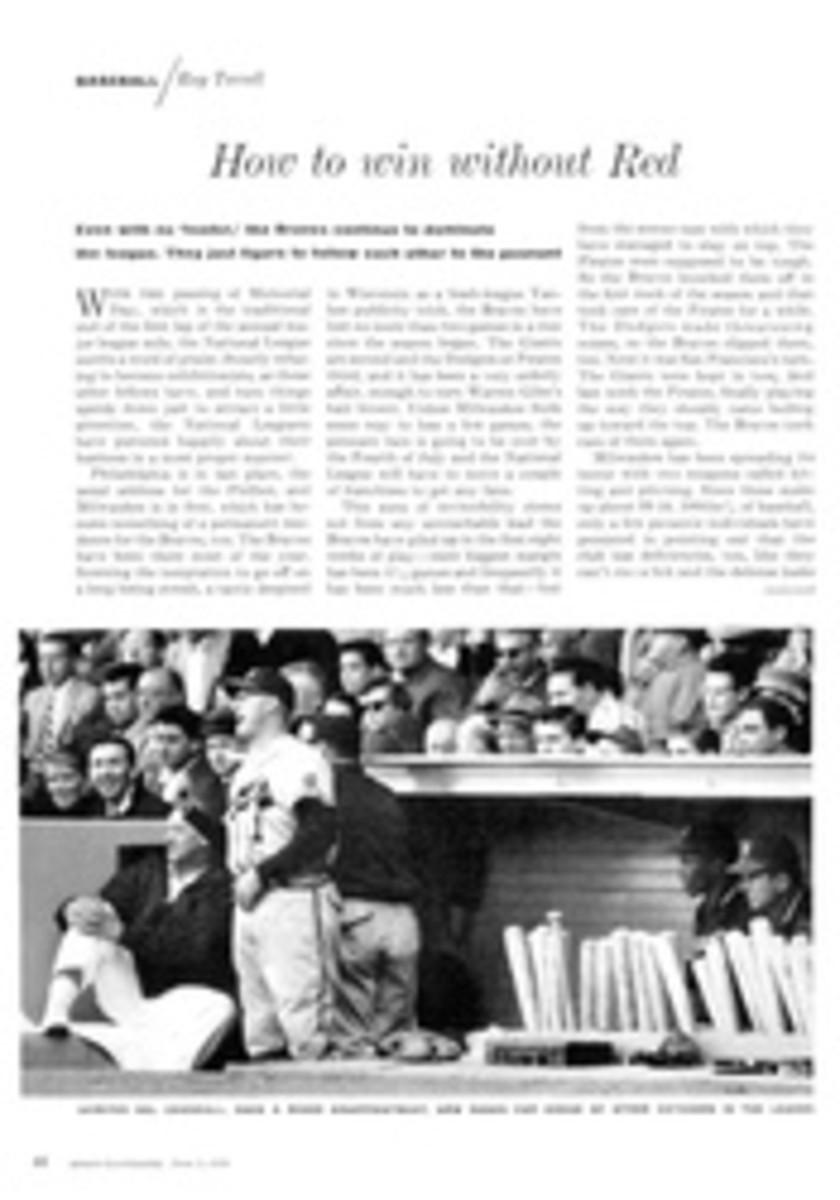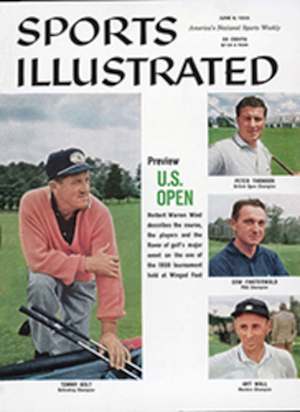
THE QUESTION: What class boat makes for the keenest racing competition?
JOHN NICHOLAS BROWN
Yachtsman
Providence and Newport
Any of the one-design classes. I prefer racing a cruising boat, but one-design classes in cruising boats are rare. However, there is a fiber glass one-design cruising boat called the Block Island 40. I'm building one. It's 40 feet over-all with an 11-foot 9-inch beam and a 26-foot 6-inch waterline.
VICE-ADMIRAL RICHARD F. WHITEHEAD
USN (Ret.)
Dinghy racing between the colleges is terrifically competitive. Over 70 colleges compete. I saw the finals of one championship at Annapolis, when Brown out-sailed the Naval Academy in an exciting race. Incidentally, Brown is the host college for this year's championship in Narragansett Bay.
DENNIS JORDAN
Commodore
St. Francis Yacht Club
San Francisco
The six-meter class. The boats are built under the International Rule, which allows more freedom in hull design than class boat rules. The five-man crew must be perfectly drilled. Because of the design of the boat the crew has the advantage of always standing while working, and getting greater speed in maneuvers.
TED HOOD
1956 Mallory Cup
winner
Marblehead, Mass.
The keenest competition, in my experience, took place in the 12-meter class last summer at Newport during the elimination runs for the honor of competing for the America's Cup. I was on Vim. I can tell you that the whole crew of 11 and the skipper were on their toes all the time. There is no greater racing thrill.
NANCY MEADE
1958 Adams Cup
winner
Rye, N.Y.
If you're sailing with a crew, the hottest classes in my area are the 210 and the Star. The 210 has a skipper and two in the crew; the Star has a skipper and one crewman. I prefer the Star, two in a boat, my husband and me. I think we make a good racing team. Yes, he's the crew and I'm the skipper.
ROBERT BAVIER JR.
Vice-President Yachting
Magazine New York City
In general, the smaller one-designs give the hottest competition, because in these classes a greater number of keen sailors is able to compete, not just those who are wealthy. There are many great one-design classes, but if forced to pick one of the toughest to win in, I would choose the Star.
LOWELL NORTH
Former Star champion
San Diego
Through the years competition in the Star class has developed into the hottest of all racing competition. It seems that the champions in other classes move into the Star class because the competition is so fierce—and therefore rewarding. No matter what country you're in you find avid Star skippers.
ZENAS R. BLISS
Dean, Brown University
Navigator, Rainbow and Ranger 1934, 1937
America's Cup races
Ocean racing, like the Newport-to-Bermuda run, is the thorough test. It is most competitive, being a test for boat, crew, skipper and navigator. The bigger the boat the more important the crew, and the smaller the boat the more important the helmsman, but the top skippers usually win in any size boat.
HARRY MELGES JR.
Scow champion 1949, 1950, 1956
Lake Geneva, Wis.
Out here we consider the scow the fastest thing under sail. It can even beat the catamaran over a triangular course. There are hundreds of scows, and competition is terrific. The Class A, a 38-footer, has a beam of eight feet, six of which are flat, and a crew weighing not more than 1,000 pounds, usually six men.
EUGENE H. WALET III
Mallory Cup winner 1953, 1954
New Orleans
There are three very close one-design classes which compete all over the world, Lightning, Star and Snipe. The keenest competition is with the Star. It's strictly a racing boat and it breeds racing sailors. I own a Lightning. The advantage is that I can enjoy sailing her as well as racing her, which is as it should be.
ELEVEN PHOTOS

